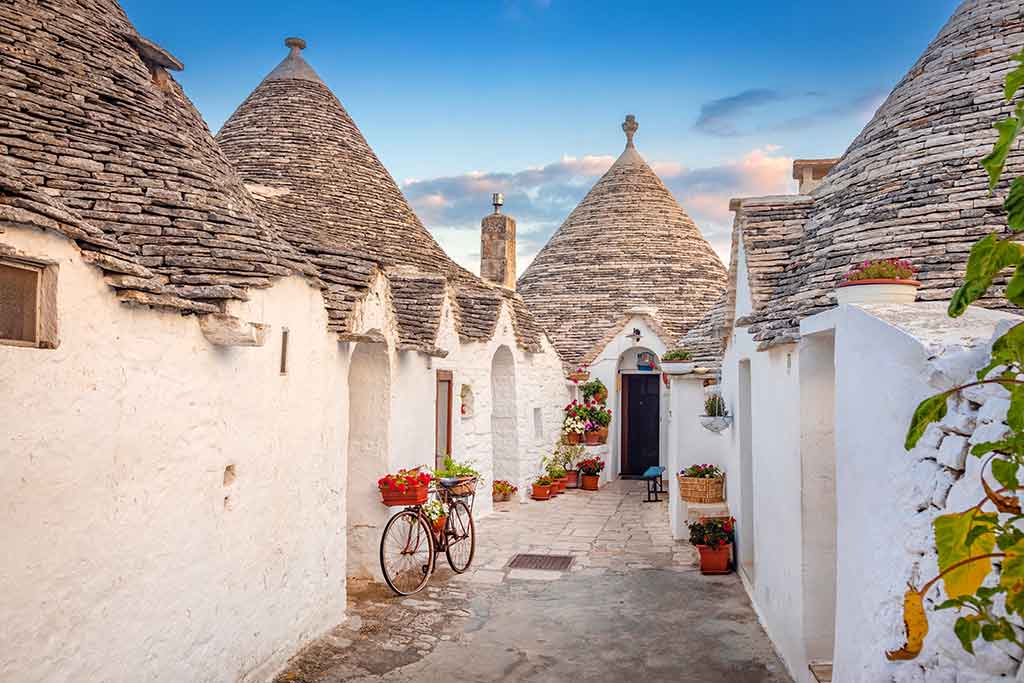
Alberobello, trulli
The magnificent Italian peninsula preserves numerous jewels, small in size but great in their beauty. Among these, we find the town of Alberobello, in Puglia, a UNESCO World Heritage Site.
The first time I heard about Alberobello from my friend who was surprised that I had never heard of trulli. Then he explained what it was about and I promised myself that one day I would go there. Every year this city attracts tourists from all over the world thanks to its famous and unique trulli, who give a mysterious charm that knows how to enchant every visitor.
Throughout the world the houses are normal, it means more or less square or rectangular, instead the trulli are houses painted in white and with a conical roof and gray stones.
From each trullo, which often consists of three or four roofs, because each part is covered by its own roof, a high chimney appears. The trulli, even if they follow the common criteria, differ in some details. So you can see the trullo with the garden, the trullo with the well, the twin one etc. The trulli form a normal village, with streets and streets usually full of tourists who browse around all corners of the district.
They don't bother anyone, because practically every trullo hosts commercial activities: you can buy pottery, craft stone constructions, yarns fine fabrics, typical products of Apulian gastronomy. In some trulli there are taverns, restaurants and hotels, which are so atypical, that the word 'hotel' does not seem very suitable for me.
The largest building is the two-story Trullo Sovrano, which now houses a museum and which is decorated in the original style; moreover, during the summer season, there are some events, such as small concerts or theatrical performances.
The Trulli date back to the 16th century, when the first forty units of trulli were built, and continued in the following century with the same round structure, reaching about 100 units present on the territory. These houses have a special shape: triangular sloping roof, decorated with symbolistic or religious motifs, and stone walls, to protect its inhabitants from the heat stuffy summer and from the pungent winter cold, maintaining a warm constant temperature inside them.
In fact, the Counts of Acquaviva allowed the peasants who worked their lands to build houses, who, however, presented the dry walls and that were built with the only aid of stones and without mortar, so that it was easy for the Count to destroy them in case of infidelity.
The view that opens to Alberobello is enchanting, it seems to be in a fairy tale: the Trulli become blinding under the sunlight and the plants that color the whiteness of the city seem to have even more vivid colors, making the whole whole thing simply wonderful.
In this country, which at first glance gives the impression that smurfs live there, is the church of San Antonio. Probably the only church in the world in the shape of a trullo. Among other buildings not in trullo there is also the Town Hall, the basilica and the Love House — the first non-trullo construction of 1797. All these buildings make a huge impression... precisely because they are not in the shape of a trullo.
written by David Perkins - Last update: 27/07/2022
This guide has been translated automatically through a third party service. Visititaly offers these automatic translations to help site visitors, however the automatic translations may contain inaccuracies, errors or inaccuracies. You can contact us to report inaccuracies or errors and we will check the translation.